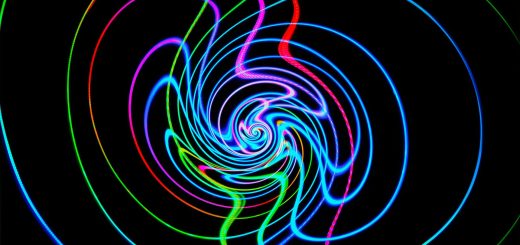What Is the Internet of Things and Why It Matters

Hey there, amazing readers! 🖐️ Just a quick note: yes, we know there are a lot of ads here. Trust us, we get it—it’s not the prettiest look, but they help us keep this blog alive and kicking. Those pesky little ads cover the costs of all the behind-the-scenes magic, from hosting and tech stuff to creating content we hope you’ll love.
We’re committed to delivering quality posts, and your support (even just sticking around despite the ads) means everything to us. So, bear with us, and thanks for helping us keep the good vibes rolling. Now, on to the fun stuff! 😉
TRANSLATE BUTTON AT THE END OF THE ARTICLE
A Quick Overview
The Internet of Things (IoT) is more than just a buzzword; it’s a transformative force shaping our lives, industries, and cities.
Picture this: everyday objects like your fridge, thermostat, and even your car are not just passive items.
They’re connected, capable of communicating with each other and with you.
This interconnectedness is changing how we interact with technology and each other.
In this article, I’ll guide you through the fascinating world of IoT, explaining why it matters and how it influences various aspects of our daily lives.
What Exactly Is the Internet of Things (IoT)?
At its core, the Internet of Things refers to a network of physical objects—"things"—embedded with sensors, software, and other technologies that enable them to connect and exchange data with one another over the internet.
Imagine your watch tracking your fitness and sending that information to your smartphone.
That’s IoT at work!
Devices and Sensors: IoT devices range from simple sensors to complex systems.
They can be anything from smart thermostats to industrial machinery.
Data Exchange: These devices communicate with each other and with centralized systems, sharing data that can be analyzed for insights and decision-making.
Automation: IoT enables automation, allowing devices to perform tasks without human intervention.
For instance, your smart lights can adjust automatically based on the time of day or occupancy.
Remote Control: You’ll find that many IoT devices can be controlled remotely.
This means you can check your home security system while you’re on vacation—how cool is that?
Real-Time Analytics: The data collected by IoT devices can be analyzed in real-time to inform actions.
This capability is crucial for applications like monitoring traffic flows or health conditions.
Interconnectivity: One of the most exciting aspects is how IoT devices can interact with one another.
For example, a smart thermostat may adjust the temperature based on how many people are in your home, a function made possible through sensor data from smart devices.
Scalability: IoT can easily scale from a single device to thousands, making it suitable for both personal and industrial applications.
User Experience: Ultimately, IoT is about enhancing the user experience.
It should make life simpler, more efficient, and more enjoyable.
Ecosystem: The IoT ecosystem is ever-expandable.
New devices and applications are continuously being developed, each with a unique purpose.
Interactivity: Finally, the beauty of IoT is its ability to create interactive experiences.
Whether it’s receiving alerts on your phone or having your coffee ready when you wake up, the possibilities are endless!
A Brief History of IoT: From Concepts to Reality
The concept of connected devices isn’t new.
It dates back to the early days of the internet.
1960s: The groundwork began when researchers started imagining a network of interconnected devices.
The ARPANET, the precursor to the internet, laid the foundation.
1982: The first "smart" appliance was born at Carnegie Mellon University.
A modified toaster could report its toasting status over the internet.
It’s funny to think how something so simple started it all!
1999: Kevin Ashton, a technology pioneer, coined the term "Internet of Things." He envisioned a world where objects could sense and communicate with each other.
2005: The International Telecommunications Union (ITU) published a report on IoT, highlighting its potential and laying the groundwork for future developments.
2010s: The concept really took off.
Companies began releasing smart home devices, wearables, and industrial IoT solutions.
Who could forget the arrival of smart thermostats and voice assistants?
Standardization: As IoT grew, so did the need for standards and protocols to allow devices to communicate effectively.
The Zigbee and Z-Wave protocols emerged as front-runners in smart home applications.
Connectivity Improvement: The evolution of wireless technologies, such as Wi-Fi, Bluetooth, and cellular networks, significantly boosted IoT adoption.
Cloud Computing: The rise of cloud services provided platforms for storing and analyzing vast amounts of IoT data.
This change made it easier for devices to send and receive information without relying on local servers.
Big Data: With IoT, we now have access to unparalleled amounts of data.
Companies began developing analytics tools specifically for IoT data, allowing for better decision-making.
Current Landscape: Today, millions of devices are connected to the internet, from everyday gadgets to sophisticated industrial machinery, marking an unprecedented era of innovation.
How IoT Devices Communicate with Each Other
The communication between IoT devices is a fascinating aspect of their functionality.
Protocols: Devices use various protocols to communicate.
Common protocols include MQTT, CoAP, and HTTP.
These protocols allow for efficient data exchange, tailored to the needs of specific applications.
Network Types: IoT devices can connect over different types of networks, including Wi-Fi, cellular networks, or dedicated IoT networks like LoRaWAN.
Edge Computing: Some IoT systems use edge computing, where data processing occurs closer to the device rather than relying solely on cloud processing.
This can reduce latency and save bandwidth.
Data Formats: The data exchanged can be in various formats, such as JSON, XML, or binary, depending on the application and the devices involved.
Security Measures: Communication often involves encryption to protect data integrity and privacy, ensuring that sensitive information is safeguarded.
Interoperability: One of the main challenges is enabling different devices from various manufacturers to work together seamlessly.
Efforts in standardization and open-source initiatives strive to tackle this.
APIs: Many devices come with Application Programming Interfaces (APIs) that allow them to interact with other software and devices, further enhancing their utility.
Real-Time Processing: Some IoT applications require real-time data processing.
For instance, smart traffic lights need to respond quickly to changes in traffic flow.
Data Management: IoT platforms help in managing the data flow between devices, ensuring that data is sent, received, and acted upon effectively.
User Interaction: Many IoT devices offer user-friendly interfaces, allowing for easy control and monitoring, whether through mobile apps or web dashboards.
The Role of IoT in Our Daily Lives and Homes
IoT is revolutionizing the way we live at home.
Smart Homes: Devices like smart speakers, lighting systems, and thermostats have made daily tasks easier and more efficient.
Imagine controlling your lights with just your voice!
Energy Management: Smart thermostats learn your habits and adjust heating or cooling accordingly.
This not only saves energy but also cuts down on utility bills.
Home Security: IoT security systems offer features like remote monitoring, alerts, and real-time video feeds.
You can check in on your home from anywhere in the world.
Health Monitoring: Wearable devices track heart rates, sleep patterns, and activity levels.
This data helps individuals stay on top of their health.
Connected Appliances: Smart refrigerators can suggest recipes based on ingredients you have on hand or remind you when you’re low on milk.
Talk about a helpful assistant!
Convenience: Imagine walking into your home, and the lights turn on, the thermostat adjusts, and your favorite music starts playing—all because your smart home knows you’ve arrived.
Voice Assistants: With devices like Amazon’s Alexa or Google Assistant, you can control everything from your morning routine to your evening entertainment with just your voice.
Automated Tasks: IoT can automate mundane tasks like watering plants or feeding pets.
This frees up time for things you enjoy.
Elderly Care: IoT devices can assist the elderly by monitoring their activity and health metrics, alerting caregivers if something seems amiss.
Integration: The beauty of the smart home ecosystem is that various devices can integrate with each other, creating a seamless living experience.
Smart Cities: Enhancing Urban Living with IoT
IoT isn’t just changing our homes; it’s also making cities smarter.
Traffic Management: Cities are utilizing IoT to monitor traffic flows in real time, adjusting traffic signals to reduce congestion.
Imagine smoother commutes!
Waste Management: Smart bins can notify waste management services when they need to be emptied, optimizing collection routes and reducing costs.
Public Safety: IoT-enabled surveillance systems help law enforcement monitor public spaces effectively, improving response times during emergencies.
Energy Efficiency: Smart streetlights use sensors to adjust brightness based on pedestrian presence, saving energy and reducing costs.
Water Management: IoT sensors can monitor water quality and detect leaks in pipelines, ensuring clean and sustainable water supply.
Public Transport: Real-time tracking of buses and trains allows passengers to receive updates on arrival times, making public transport more efficient.
Environmental Monitoring: Cities can track air quality, noise levels, and weather conditions through IoT sensors, enabling better urban planning and public health initiatives.
Citizen Engagement: Smart city applications can involve citizens in decision-making processes, allowing them to report issues through mobile apps, fostering community participation.
Emergency Response: IoT can enhance disaster response by providing real-time data about weather conditions, helping authorities make informed decisions quickly.
Economic Development: Smart cities can attract businesses by providing better infrastructure, connectivity, and quality of life for residents.
The Importance of IoT in Healthcare Solutions
The healthcare sector is experiencing a significant transformation thanks to IoT.
Remote Patient Monitoring: IoT devices enable healthcare providers to monitor patients’ vital signs from home, reducing the need for in-person visits.
Telemedicine: Patients can consult with doctors via video calls, making healthcare more accessible, especially for those in remote areas.
Wearable Devices: Fitness trackers and smartwatches can monitor health metrics, providing valuable data for preventive care.
Medication Management: Smart pill dispensers can remind patients to take their medications, improving adherence to treatment plans.
Data-Driven Decisions: Healthcare providers can analyze data collected from IoT devices to identify trends and improve patient outcomes.
Hospital Management: IoT can help hospitals manage resources efficiently, tracking equipment usage and optimizing staff allocations.
Emergency Response: In critical situations, IoT devices can alert medical personnel to a patient’s condition, ensuring timely intervention.
Infection Control: Wearable sensors can monitor healthcare workers’ hygiene practices, helping to reduce hospital-acquired infections.
Chronic Disease Management: IoT devices can track chronic conditions like diabetes, allowing for real-time adjustments and better management.
Patient Engagement: IoT can empower patients by giving them access to their health data, encouraging proactive health management.
Revolutionizing Industries: IoT in Agriculture and Beyond
IoT is also making waves in various industries.
Smart Agriculture: Farmers are using IoT sensors to monitor soil moisture, weather conditions, and crop health, optimizing yields and conserving resources.
Supply Chain Management: Companies can track inventory levels in real-time, ensuring that products are delivered when needed, reducing waste and improving efficiency.
Manufacturing: IoT is enhancing predictive maintenance by monitoring machinery performance and predicting failures before they happen.
Transportation: Fleet management systems use IoT devices to monitor vehicle locations, speeds, and conditions, improving efficiency and safety.
Retail: Smart shelves can monitor stock levels and automatically reorder products, ensuring that stores are always stocked with what customers want.
Energy: IoT applications in the energy sector allow for real-time monitoring of energy consumption and generation, enabling better resource management.
Construction: IoT devices can monitor construction site safety, ensuring that workers adhere to safety protocols.
Mining: Sensors can track equipment health and worker location, improving safety and productivity in hazardous environments.
Financial Services: Banks use IoT for fraud detection, monitoring transactions in real-time to identify suspicious activities.
Insurance: IoT devices can analyze risk factors more accurately, allowing insurers to create more tailored policies for customers.
How IoT Improves Energy Efficiency and Sustainability
One of the most commendable aspects of IoT is its potential to foster sustainability.
Smart Grids: IoT technologies help manage energy distribution effectively, reducing waste and optimizing energy consumption.
Renewable Energy Management: IoT helps monitor energy production from solar panels and wind turbines, ensuring maximum efficiency.
Home Energy Monitoring: Smart meters allow homeowners to track their energy usage in real-time, encouraging conservation.
Building Management: IoT sensors can automatically control heating, cooling, and lighting based on occupancy, significantly reducing energy usage.
Water Conservation: Sensors can detect leaks in irrigation systems, preventing water waste while ensuring crops receive the right amount of hydration.
Sustainable Transportation: IoT applications can help manage public transportation systems, reducing congestion and lowering emissions.
Waste Reduction: IoT-based waste management solutions can analyze waste production patterns, promoting recycling and waste reduction initiatives.
Carbon Footprint Tracking: Businesses can monitor their carbon emissions through IoT devices, helping them to adopt more sustainable practices.
Environmental Monitoring: Sensors can track air and water quality, enabling governments to take action when pollution levels exceed acceptable limits.
Public Awareness: IoT can drive community engagement in sustainability initiatives, helping people understand their impact on the environment.
Security Concerns: Protecting Your IoT Devices
As exciting as IoT is, it does come with its share of security challenges.
Data Privacy: With so many devices collecting personal data, ensuring that this information is protected is crucial.
Device Vulnerabilities: Many IoT devices lack robust security features, making them attractive targets for cybercriminals.
Network Security: Poorly secured networks can expose multiple devices to attacks, compromising home or business security.
User Education: Many users aren’t aware of best practices for securing their IoT devices, leading to potential vulnerabilities.
Encryption: Implementing strong encryption methods can help protect data transmitted between devices.
Regular Updates: Manufacturers need to provide regular firmware updates to fix vulnerabilities, but users must be proactive in applying them.
Two-Factor Authentication: Enabling two-factor authentication on accounts linked to IoT devices adds an additional layer of security.
Firewalls: Using firewalls can help protect your IoT devices from unauthorized access.
Device Management: Keeping an inventory of all connected devices can help identify unauthorized devices on your network.
Industry Standards: There’s an increasing push for industry-wide standards to improve security across IoT applications.
The Future of IoT: Trends and Innovations Ahead
As IoT technology continues to mature, several exciting trends are on the horizon.
5G Connectivity: The rollout of 5G networks will enhance IoT capabilities, providing faster and more reliable connections.
AI Integration: Integrating artificial intelligence with IoT will enable devices to learn from data and make smarter decisions.
Edge Computing: As data volumes increase, processing information closer to the device will become more important, reducing latency and bandwidth usage.
Interoperability: Efforts to enhance compatibility between different IoT devices will continue, making it easier for users to build interconnected ecosystems.
Blockchain: This technology can enhance IoT security by providing a decentralized method for securing data transmission.
Augmented Reality (AR): AR can be utilized in conjunction with IoT for applications like remote maintenance or enhanced customer experiences.
Smart Agriculture: Continued innovations in IoT will revolutionize farming through better monitoring and management of resources.
Health Monitoring Advances: Future wearable devices will likely provide even more detailed health insights, driving preventive healthcare.
Consumer Demand: As awareness grows, consumers will increasingly demand more connected devices that enhance their daily lives.
Sustainability Goals: The push for sustainability will drive innovations in IoT, especially in sectors like energy and waste management.
Why Businesses Should Embrace IoT Technology Today
For businesses, adopting IoT is no longer an option; it’s a necessity.
Enhanced Efficiency: IoT can streamline operations, reducing downtime and improving productivity.
Data-Driven Insights: Businesses can leverage data collected from IoT devices to make informed decisions, leading to better outcomes.
Cost Savings: By optimizing processes and resource usage, companies can significantly cut costs in the long run.
Customer Experience: IoT can enhance the customer experience by offering personalized services and improving engagement.
Competitive Advantage: Early adopters of IoT can gain a competitive edge, attracting tech-savvy customers and clients.
Innovation: IoT can drive innovation within organizations, leading to the development of new products and services.
Scalability: IoT solutions can easily scale, allowing businesses to grow without being hampered by outdated systems.
Remote Monitoring: Companies can monitor operations remotely, ensuring efficient management of resources.
Risk Management: IoT can offer predictive analytics, helping businesses anticipate and mitigate risks before they escalate.
Sustainability Goals: Embracing IoT can support corporate social responsibility initiatives, showcasing a commitment to sustainability.
Conclusion: The Bright Future of the IoT Revolution!
As we look ahead, the Internet of Things is set to revolutionize how we live, work, and interact.
From smart homes enhancing our daily lives to connected cities improving urban living, the implications are vast.
Businesses embracing IoT technology stand to benefit immensely, gaining insights that drive efficiency, innovation, and better customer experiences.
With advancements in connectivity, data analytics, and security, the future of IoT is bright.
It’s about fostering connections—between devices, people, and ideas.
The potential is limitless, and I for one can’t wait to see where this journey takes us.
So, let’s embrace the IoT revolution together!

The Enlightenment Journey is a remarkable collection of writings authored by a distinguished group of experts in the fields of spirituality, new age, and esoteric knowledge.
This anthology features a diverse assembly of well-experienced authors who bring their profound insights and credible perspectives to the forefront.
Each contributor possesses a wealth of knowledge and wisdom, making them authorities in their respective domains.
Together, they offer readers a transformative journey into the realms of spiritual growth, self-discovery, and esoteric enlightenment.
The Enlightenment Journey is a testament to the collective expertise of these luminaries, providing readers with a rich tapestry of ideas and information to illuminate their spiritual path.
Our Diverse Expertise 🌟
While our primary focus is on spirituality and esotericism, we are equally passionate about exploring a wide range of other topics and niches 🌍📚. Our experienced team is dedicated to delivering high-quality, informative content across various subjects ✨.
To ensure we provide the most accurate and valuable insights, we collaborate with trusted experts in their respective domains 🧑🏫👩🏫. This allows us to offer well-rounded perspectives and knowledge to our readers.
Our blog originally focused on spirituality and metaphysics, but we’ve since expanded to cover a wide range of niches. Don’t worry—we continue to publish a lot of articles on spirituality! Frequently visit our blog to explore our diverse content and stay tuned for more insightful reads.





